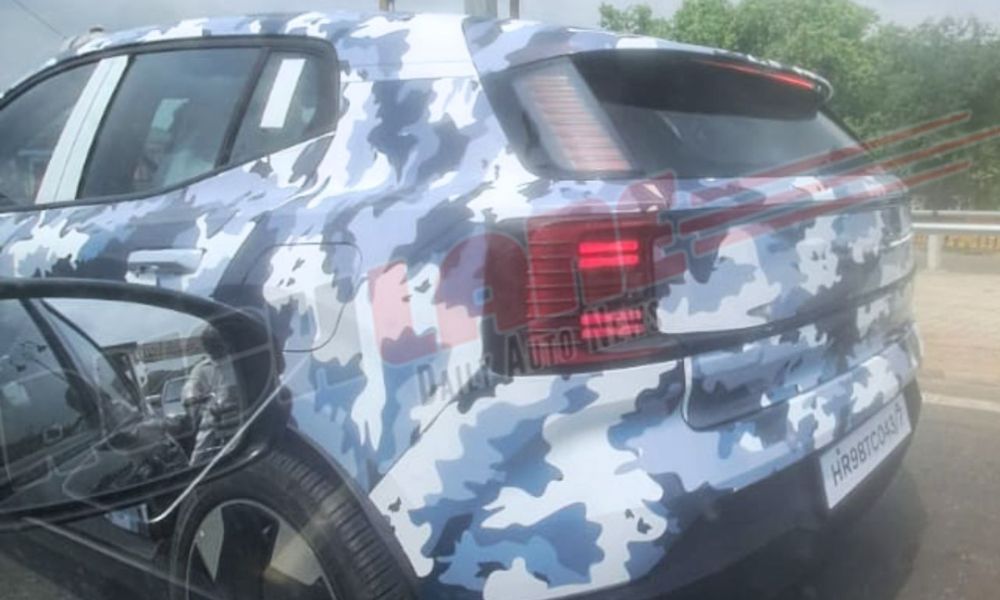First, the pressure plate, friction plate and flywheel need to be put together as they would be when attached to the crank.
BHPian vishy76 recently shared this with other enthusiasts:
Clutch plates and flywheel
While all other cars use a diaphragm type pressure plate (including the Padmini diesel and S1), the 1100 petrol uses a Borg and Beck type pressure plate with a conventional friction plate and a single mass flywheel.

On my car, the friction plate material was badly glazed, while the pressure plate fingers were worn down quite a bit. The release bearing was in surprisingly good shape. The fork and bearing sleeve also had some wear.
Coming to what plan of action I had in mind:
Friction plate:Can be relined easily by any reputed clutch plate repair fellow with good quality non-asbestos material. However, I already had a refurbished plate lying with me and decided to just go ahead with it
Pressure plate: Unlike conventional pressure plates, this one can be taken apart entirely. The face plate (which contacts the friction plate) can be skimmed, while the springs and fingers can be changed too. API manufactured NOS parts are available. I decided to again use a refurbished plate I had lying with me
The clutch release bearing and fork would be replaced entirely. I wanted to replace the bearing sleeve too, but had to reuse it because the new (repro) part was incorrectly dimensioned and of very poor quality.
Now comes the interesting bit. The pressure plate on modern day cars doesn’t really need any adjustment per say. You simply slap it on and tighten the clutch cover bolts. However, on the 1100, things are a bit different.
The pressure plate has adjusting bolts for each of the 3 fingers. These bolts are used to adjust the height of the fingers relative to the top of the plate.
Clutch pressure plate adjustment
Initially, no mechanic/DIY enthusiast/owner I spoke to from any group knew anything about this. Everyone claimed it was a job best left to a mechanic.
So I did take it to my trusted mechanic Ketan and chacha. Ketan taught me how to adjust the pressure plate in very simple steps as follows:
- First, the pressure plate, friction plate and flywheel need to be put together as they would be when attached to the crank. This is so that the pressure plate springs are under tension. The fingers cannot be adjusted without this step
- With the three parts attached, the clearance between the clutch cover (Part of the pressure plate which faces the gearbox side) and each of the 3 fingers needs to be adjusted. To do this, the adjusting bolts (atop each finger) are slackened or tightened accordingly. The gap between the top of each finger and the pressure plate cover should be equal to the thickness of the head of a 13mm bolt. This is what Ketan calls “course adjustment”.
- For the finer adjustment, a vernier calliper or a matchstick is used. The distance of each finger is measured from the friction plate below. All three are brought to the exact same measure. Alternatively, a matchstick can be used. Take any one finger, rest the match on the friction plate surface below and measure how far up the pressure plate finger is and mark it. Then adjust all other fingers to the same height.
The entire setup put together:
The flywheel was first skimmed at a lathe shop then washed. There are two faces which need skimming. The face where the friction plate contacts it and the face where the pressure plate bolts on the outer side:
The fine adjustment going on using a vernier calliper:
Finally, a release bearing (old or any scrapped one with appropriate dimensions) was used to compress the pressure plate fingers and check if the friction plate was lifting. There are holes on the side of the flywheel to do this:
The gap where my finger has slid in should roughly be equal to the thickness of the head of a 13mm hex bolt. This is a very rudimentary way of setting pressure plate fingers, but the 1100 technical manual doesn’t have any data on this:
Finally, I used a NOS input shaft I had procured to centre the clutch plates. This is essential else the gearbox will not slide in no matter what you try:
Installing the box back in wasn’t easy either. First, the lack of space at the bottom to lift the box up and bring it in line with the crank so that the input shaft would slide in. Then the fact that the clutch levers on the side of the box kept hitting the subframe cross member. And third, the weight and length of the gearbox. It took two people to do the job with a stool for support. First, the box was rotated and hoisted simultaneously to clear the subframe. After this, it was rested on the stool till we regained our might.
Post this, one person lifted the box up at the front and the other lent support at the back to ensure the box and engine were inclined at the same angle. We also lifted the engine up at the front using a jack so that the rear of the engine would lower itself and matching the gearbox input shaft to the crank would be easier.
Post this, it was simply a matter of reversing everything we had done before to remove the box. Although there isn’t a remarkable difference in clutch weight, the clutch release has become very smooth and shift quality has improved. Also, there is peace of mind knowing the crank oil seal is also new now.
Check out BHPian comments for more insights and information.








